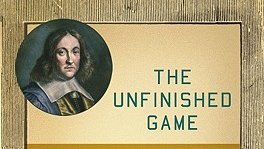
Reading @LongFormMath's book "Proofs" has been a delightful experience. Not only did I learn a lot about proofs, I also noticed some great pedagogical features that I wish were a part of every math textbook. Here's my list: #mathreads (1/n) 

1. Throughout the book, Cummings shows several ways of thinking about the same thing. This is tremendously helpful.
2. Cummings acknowledges when something may be confusing or difficult to understand. This is not only very comforting, it also makes me read more carefully.
2. Cummings acknowledges when something may be confusing or difficult to understand. This is not only very comforting, it also makes me read more carefully.
3. Every chapter ends with an "open question" - a mathematical conjecture not yet proven. This is such a wonderful way of spreading the joy and wonder of mathematics!
4. Before giving a formal proof, Cummings shows the intuition behind the argument.
4. Before giving a formal proof, Cummings shows the intuition behind the argument.
I find it so helpful to see this scratch work - the "behind the scenes" - of a proof. Otherwise, it can sometimes feel like the argument has been pulled out of a hat: "How did anyone think of this?"
5. When introducing new content, it is common (and often helpful) to look back
5. When introducing new content, it is common (and often helpful) to look back
at similar things one has done in the past. But Cummings also takes the time to motivate why the new content is interesting by showing when it will be useful later on in one's mathematical career. Such a nice way to motivate the usefulness of mathematics!
6. Last but not least, I really appreciate how Cummings systematically gives both examples and non-examples of new concepts. It's such a helpful way of describing new ideas.
• • •
Missing some Tweet in this thread? You can try to
force a refresh









